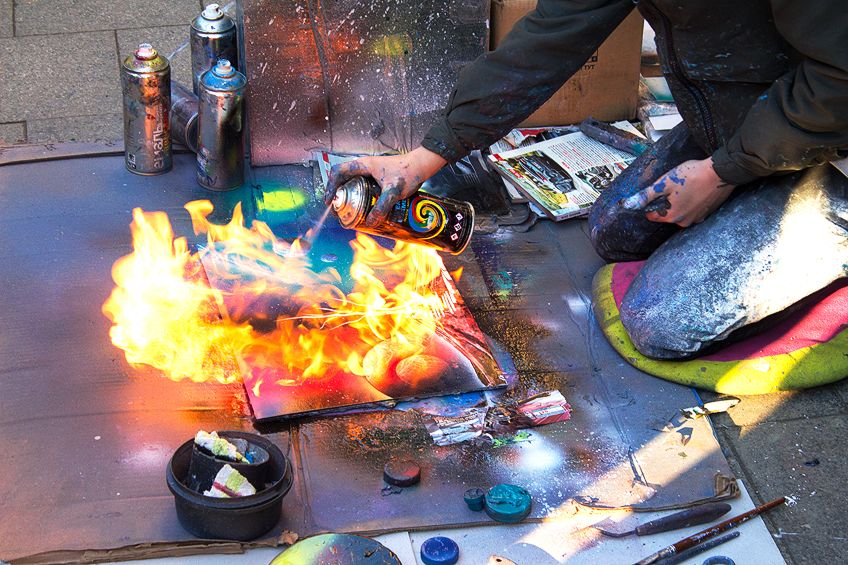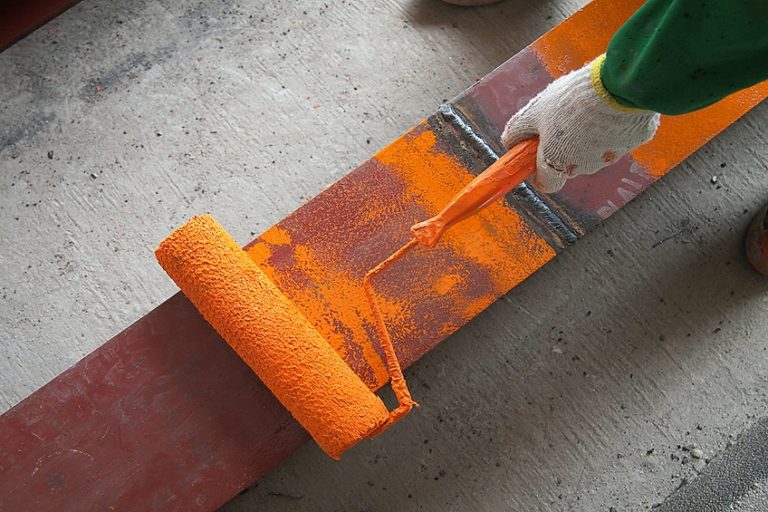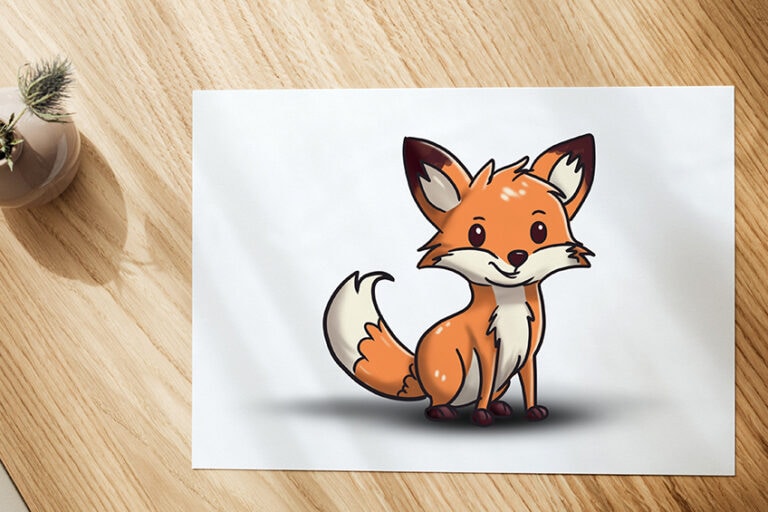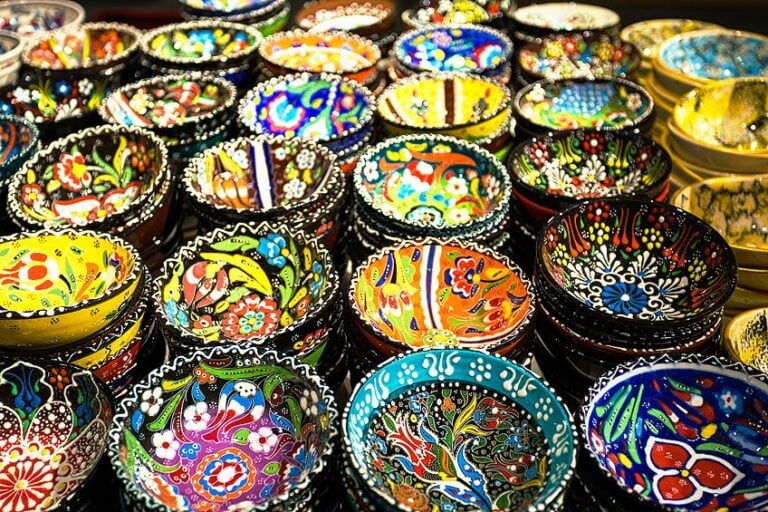Is Paint Flammable? – How Flammable Are Different Types of Paint?
This post may contain affiliate links. We may earn a small commission from purchases made through them, at no additional cost to you.
Paint is something we have all used at one time or another, such as painting a piece of artwork or painting your garage floors, home, furniture, or wooden deck. One thing that often comes up when working with paint is the question of whether it is flammable. There is no simple yes or no answer to this question, as there is an assortment of factors that play a role in determining whether the paint is flammable or inflammable. We hope this article will assist you in answering the question better and allow you peace of mind when working with paint.
Table of Contents
Are Flammable and Combustible the Same Thing?
You need to have a good understanding of what combustible and flammable are, and whether the paint you are working with is combustible, flammable, or even both. It is important to note that these two things are not the same – what separates them is their flashpoint. Sometimes people incorrectly use one term in place of the other, and this can cause a lot of confusion.
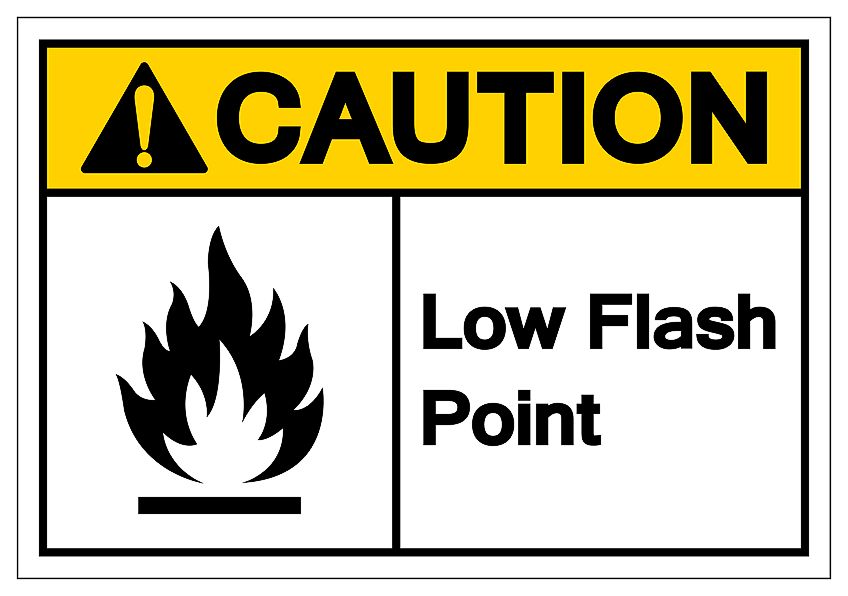
What Is a Flash Point?
The temperature at which a substance will catch alight and begin to burn is known as the flashpoint. A flammable paint flashpoint is a maximum level of 100 degrees Fahrenheit (37,8 degrees Celsius), yet the flashpoint for combustible paint falls between 100 and 200 degrees Fahrenheit (37,8 to 93,3 degrees Celsius).
What Does Flammable Mean?
Flammable paint has a low flashpoint, which means that it can burn at standard working temperatures. Examples of flammable materials include some paints, paper, grass, rubber, and gas.
What Does Combustible Mean?
A combustible material will have a high flashpoint and, therefore, the item or material will only burn at higher-than-standard working temperatures. These will not be as easy to ignite, such as certain paints, aluminum, or coal.
Did You Know: A burning match has a temperature of between 1100 and 1450degrees Fahrenheit (593,3 to 787,8 degrees Celsius).
Which Types of Paint Are Flammable?
Paints are formulated from several different ingredients and some paints require solvents to assist these ingredients to dissolve. While oil-based and solvent-based paints provide you with color and texture, they are unfortunately flammable. Such paints include enamel paint, alkyd, and lacquer.
Water-based paints are normally not flammable. The two forms of water-based paints are acrylic paint and latex paint, neither of which are considered to be flammable. That being said, certain water- and oil-based paints may have pigments in them that can be dangerous.
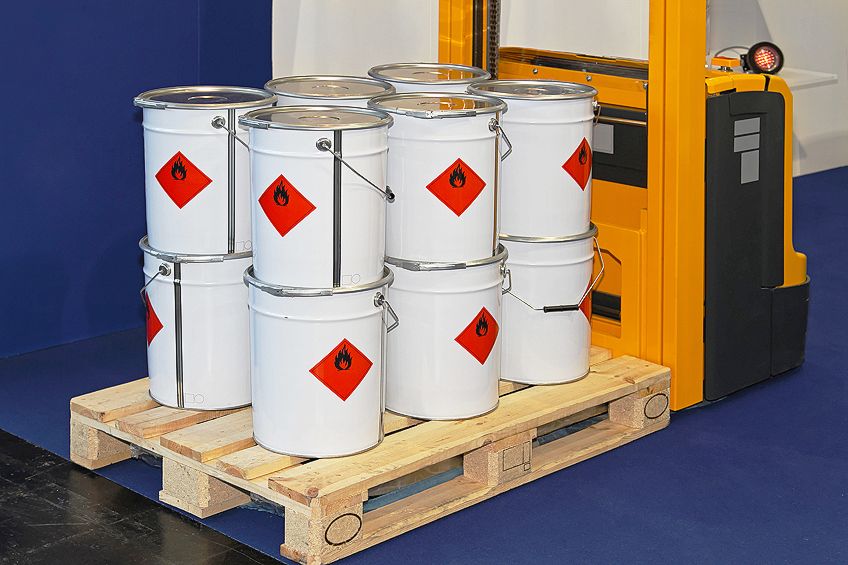
Water-Based Paint: Is It Flammable?
Water-based paints like latex paints are very popular paint options that can be used on-site construction sites, in the home, office, or simply for use on your artwork. They are environmentally friendly, give off little to no fumes, dry super-fast, and will keep their stunning colors over time. But the question is: Are water-based paints flammable?
Thanks to the binding formula of water-based paint being just that – water – it is not flammable. That being said, some may contain substances such as metallic pigments like silver or mercury, which are toxic and thought to be hazardous. Certain water-based paints can even contain formaldehyde or ammonia, which are very hazardous substances.
Oil Paint: Is It Flammable?
Oil-based paints provide you with a hard surface that is resistant to stains, scratching, and even rust over time, while also being very durable. Keep in mind that oil-based paints give off strong odors and that you will have to wear protective gear when working with them. You should ensure that you are working in a space with adequate ventilation, as these paints can be hard to clean up and take ages to dry.
But are oil-based paints flammable? Oil-based paint is made up of a binder, resin, pigment, and oil. The binder is a substance that is very similar to paint thinner, and it is this substance that makes oil-based paints flammable. That being said, once the binder solvent has evaporated, the paint film is no longer flammable.

Acrylic Paint: Is It Flammable?
As a paint, acrylic paint is great to use for your hobby projects, around the house, and on your vehicle, as these paints are very durable and simple to use, but are they flammable? All paints are formulated from an extender, solvent, pigment, some additives, and a binder. The binder in acrylic paint is either acrylic polymer emulsion or acrylic resin, and the solvent is water (hence it being a water-based paint). So, this means that in its liquid form, acrylic paint is not flammable.
Once acrylic paint has completely dried and the water has evaporated, the characteristics of the paint are altered. The paint forms a plastic polymer when dried, and is considered combustible as it will burn at very high temperatures of roughly 560 degrees Fahrenheit (293,3 degrees Celsius). This is also the temperature at which acrylic resin will burn.
Latex Paint: Is It Flammable?
Despite being called latex paint, there is no latex or rubber in the formulation of this paint. It is a very popular paint thanks to its durable finish on both outdoor and indoor applications, and the paint can be cleaned with ease.
But we need to ask, is latex paint flammable? Acrylic latex paint and acrylic paint have the same ingredients except for their pigments and binders. A pigment called Titanium Dioxide and a synthetic latex binder is found in acrylic latex paint. It is still a water-based paint as the solvent is water, which means that in both liquid and dry states, the acrylic latex paint is non-flammable.
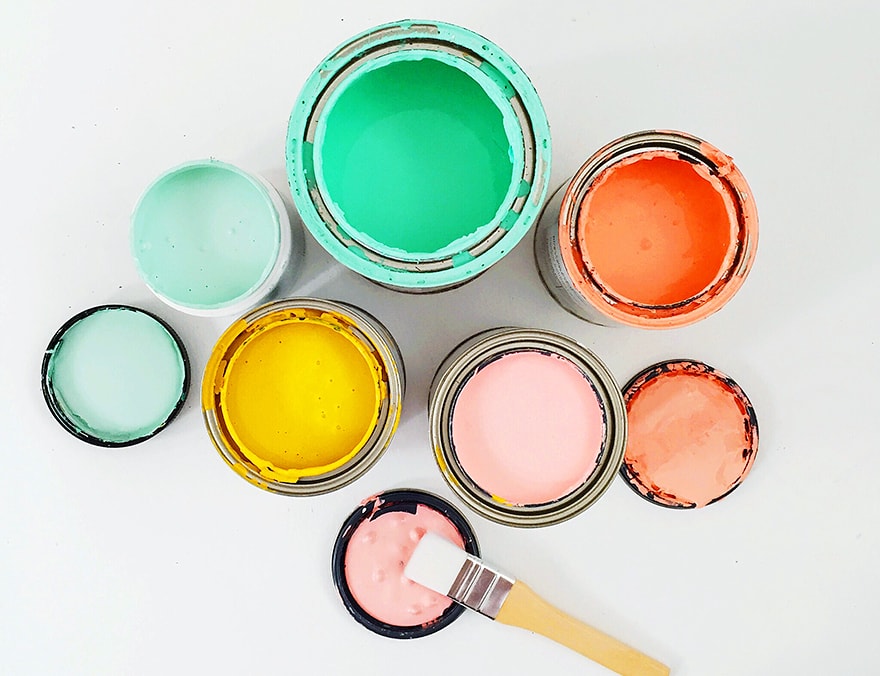
Acrylic Enamel Paint: Is It Flammable?
This type of paint is mainly used in the automotive industry. It is a durable paint that, when dried, gives you a smooth, glossy finish that can withstand weathering. It will only take an hour for acrylic enamel paint to dry to the touch, but it will require weeks to cure completely.
So, is acrylic enamel paint flammable? While the water-based acrylic enamel paint is not flammable, once it has dried it has a flammable rating of 1 (Slight Hazard) according to the Hazardous Materials Identification System (HMIS), and a flashpoint of 210 degrees Fahrenheit (98,9 degrees Celsius).
Spray Paint: Is It Flammable?
Spray paint (otherwise known as aerosol paint) is a cheaper option than using standard rollers or paintbrushes. It also dries quicker, covers a larger surface area, is simpler to use, and adheres to the surface better.
Spray paint contains gas propellants such as propane and butane and is an oil-based paint, so while it is being sprayed it is flammable. The paint has been pressurized into the can and once released, it is very toxic and extremely flammable, yet when it dries it can no longer catch alight.
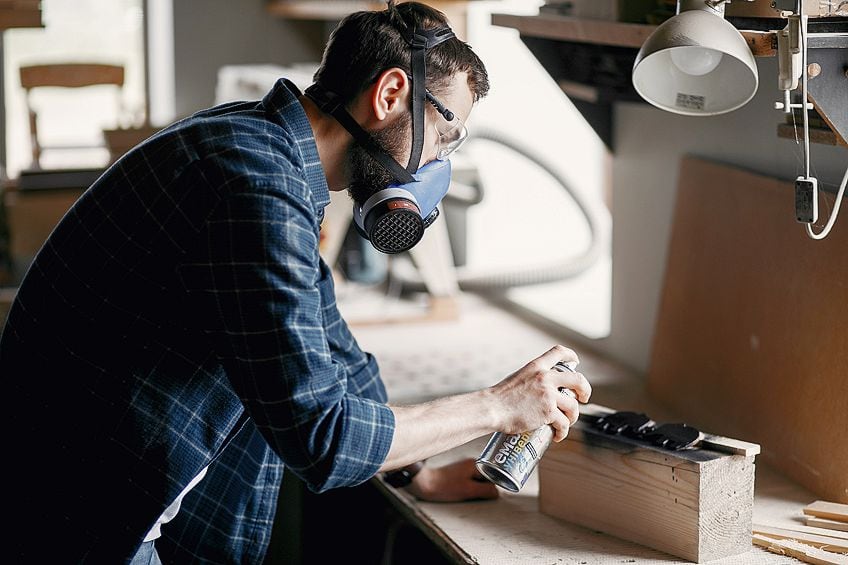
Paint Thinner: Is It Flammable?
There is an assortment of uses for paint thinners, but its primary use is of course to thin paint, clean your equipment, or dissolve the paint. Most people have paint thinners in their homes and will use them not only for paint but for a variety of other uses. It is important to know whether this particular product is in fact flammable, as it is something one stores in the home.
There is a combination of VOCs (volatile organic compounds) contained in paint thinner that has both low flammability and combustibility. It also contains petroleum, which causes it to be combustible but not flammable.
What this means is that if paint thinner is exposed to a small spark, it will not catch fire, but it will explode. That being said, if it does come into contact with a flame that has an extremely high temperature, it will then burn.
Therefore, paint thinner is combustible but not flammable, when it dries however does it then become flammable? It takes a while for paint thinner to dry so if you have a situation where there is a large amount of paint thinner in a small area, such as rags left in a bucket that had been soaked in thinners, can potentially spontaneously combust.
Chalk Paint: Is It Flammable?
Chalk paint provides you with a matte, chalky finish and is mainly used as decorative paint. If you are looking to add character to your furniture such as your bathroom cabinets, chairs, or tables, then chalk paint is ideal. It can be applied to a variety of surfaces including brick, wood, marble, or stone.
There are only three ingredients that make up chalk paint, namely plaster of Paris, baking soda, and un-sanded grout. So, the question remains, is chalk paint flammable? Thanks to it being water-based, chalk paint is not flammable in its liquid state. What is great is that it is also non-flammable once it has dried. Keep in mind that chalk paint is not considered fire-retardant, however, you can use this paint where there are high temperatures or close to a fireplace.
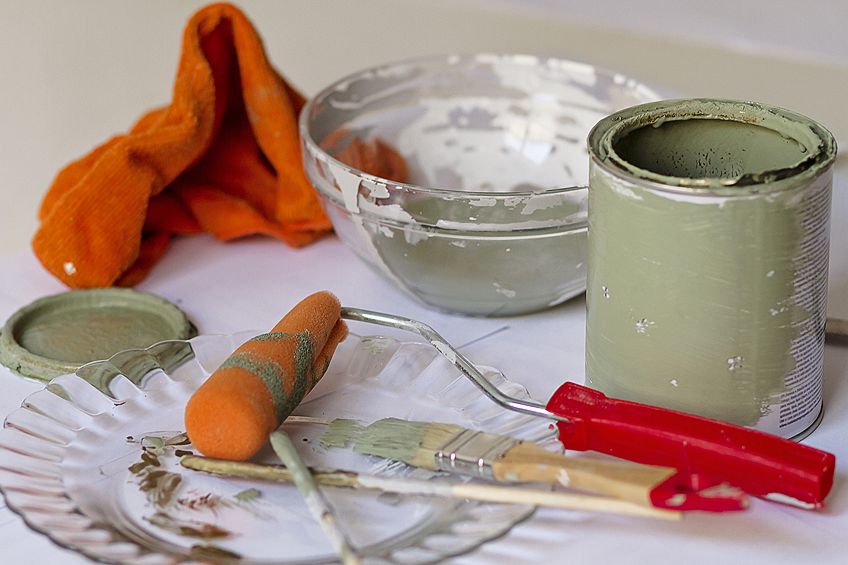
A Summary of Flammable Paints
We have taken all the above information and summarized it into a table for you so that you have a quick reference. This will help you to remember which types of paint are flammable.
| Type of Paint | Is It Flammable When Wet? | Is It Flammable When Dry? |
| Oil-Based Paints | ✔ | ✘ |
| Water-Based Paints | ✘ | ✔ |
| Spray Paints | ✔ | ✘ |
| Acrylic Enamel Paints | ✘ | ✔ |
| Acrylic Paints | ✘ | Combustible but not flammable |
| Acrylic Latex Paints | ✘ | ✘ |
| Liquitex Acrylic Paints | ✘ | Combustible but not flammable |
| Chalk Paints | ✘ | ✘ |
| Paint Thinners | Combustible but not flammable | Combustible but not flammable |
Safety Tips for Painting
Like with anything, there are certain precautions you need to take for safety when working with paint. This will ensure that you remain safe at all times and enjoy working with the medium.
- Always check the label on the paint when buying it. The label will indicate the paint’s classification and it will also advise if the paint is flammable.
- You need to be certain that you are working in a well-ventilated space. Wear the necessary safety gear so that you avoid inhaling any toxic fumes.
- When you have finished painting, ensure that you clean up your work area. If you have any soiled rags, ensure that they are correctly disposed of.
- Do not store paint near any form of heat source. Paint should always be stored in a dry, cool place.
- Keeps pets and kids away from not only your painting location but also the spot in which you store the paint.
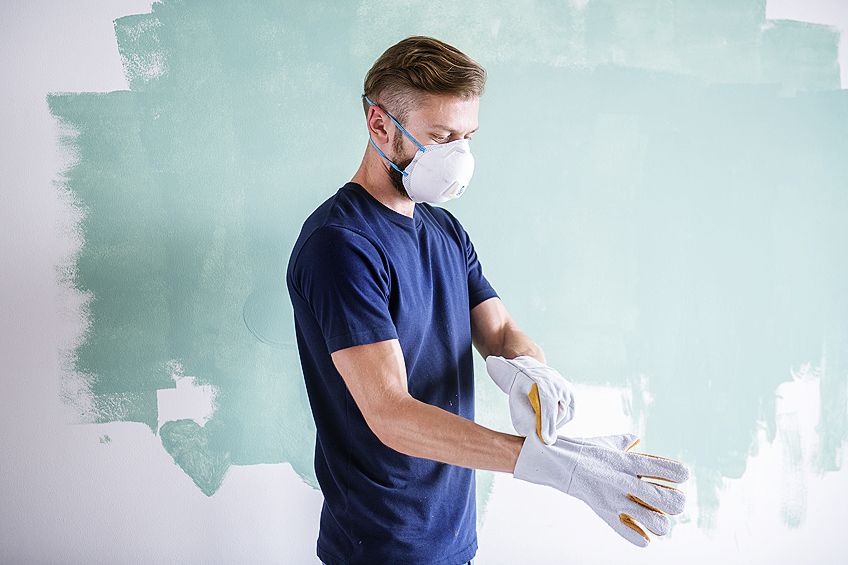
Frequently Asked Questions
Can I Put Acrylic Paint in the Oven?
You can achieve a stunning finish by placing your acrylic painted piece in the oven; you just need to ensure that the temperature is greater than 150 degrees Fahrenheit (65,5 degrees Celsius).
Is Paint Flammable?
To generalize, oil-based paints are thought to be flammable and water-based paints are non-flammable. But it is best to check the label on each paint you buy to confirm.
Is Paint Combustible?
When dry, the majority of water-based paints are combustible, and thinners are also combustible. For something to be combustible means that it has a high flashpoint and will need a lot of heat to ignite.
Is Dried Acrylic Paint Flammable?
At high temperatures, dried acrylic paint is in fact flammable and is also combustible when placed close to a fireplace or an open flame.
Larissa Meyer is a 32-year-old mother from Michigan and creative spirit since childhood. Her passion for painting and drawing has led her to an education as an illustrator and a career as a freelance graphic designer. She has a Bachelor of Fine Arts in Illustration and a degree in Graphic Design. Larissa is a talented artist who is able to master a wide range of styles and techniques to bring her artistic vision to life. Her greatest passion is currently fluid painting and epoxy resin art. Larissa’s love for art and her knowledge and experience in illustration make her the perfect Creative Director for our fluid-painting.com team. She is the creative head of our team and shares her passion and knowledge with our community through articles and tutorials.
As a mother of a 2-year-old daughter, Larissa also understands the importance of fostering creativity in early childhood. She uses her experience and knowledge to help other parents inspire their children and develop their artistic skills as well.
Learn more about Larissa Meyer and about us.

